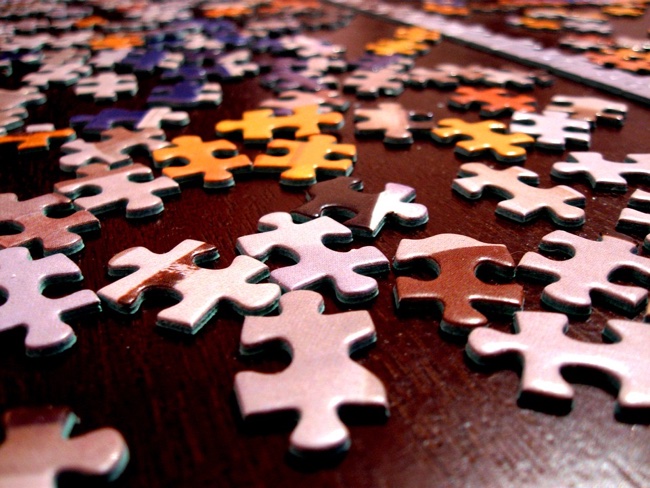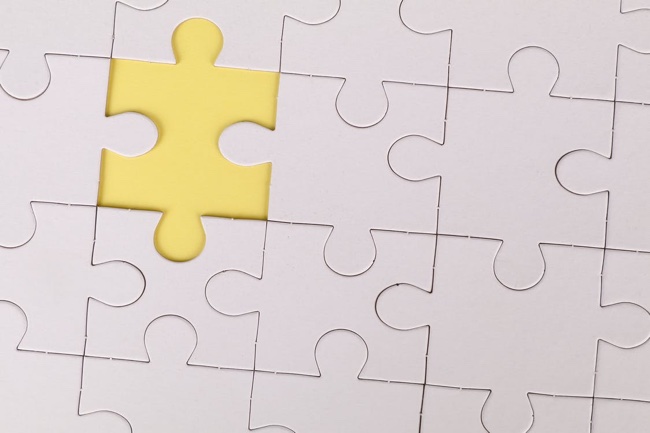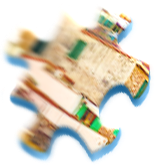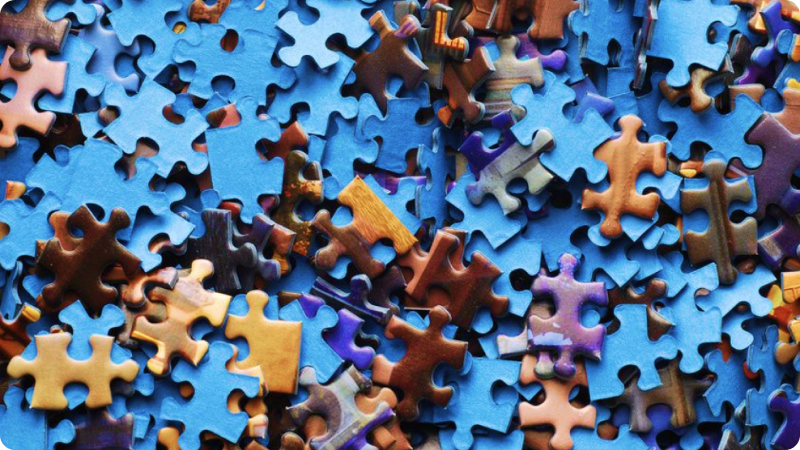Doing a jigsaw puzzle is challenging, especially if you’re new to the puzzle game. Luckily, there are some tips and tricks that will help you start your puzzle work much easier – while also taking less time to complete the puzzle.
Step 1. Ready…
First off, you should pick a puzzle. That can be hard, especially since there are so many beautiful and challenging jigsaw puzzles out there. But what you should primarily focus on is your puzzle expertise level.
Difficulty level
Think it through – have you done any jigsaw puzzles lately? Did you start them and finish them, or just the “start” part? Were those jigsaw puzzles big or small? How many pieces were there? If a 1,000 piece puzzle is challenging, maybe you should try doing a 500 piece puzzle instead. Work your way up the puzzle piece number, take your time, don’t rush into the hardest one just because the picture looks very nice. Our brain likes being challenged, but the challenge shouldn’t be an impossible one.
Planning ahead
Then you should turn to the future. What are you going to do with the puzzle once it’s completely done? Are you going to put the puzzle pieces apart and put them back into the box, or are you going to glue the puzzle pieces together and hang them on a wall? If it’s the latter, you should find a cardboard big enough to fit the whole puzzle or buy a special roll-up puzzle matt.
Workspace
This part is crucial to the whole jigsaw puzzle process. You should decide where you’re going to be putting together the puzzle. If you have a roll-up matt, you can take your puzzle anywhere if you need the space, but if you don’t plan to move it around, then you’ll have to start your puzzle work on a flat big surface, like a dining table.
Clean the surface up, make sure you have enough space not only for the puzzle itself, but also for the boxes and piles of puzzle pieces that you’re going to sort. A 1000 piece puzzle is usually 20″ x 27″, or 50 x 68 cm, a 2000 piece is logically twice as big.

Step 2. Set…
So, you’ve got your puzzle and your work space, and everything looks nice and ready. It’s time to start putting the puzzle together! Your assembling should start with the following steps.
Flip the puzzle pieces
Yes, it is a quite boring step, but in the long-run it will pay off, we guarantee that. The whole “put together” process starts right here with you flipping all puzzle pieces and having them face the same way. That’s the best way to make the jigsaw puzzle assembling way easier and faster. Once the puzzle pieces are all facing the same way, you’ll be able to see and identify them much easier.
Find edge pieces and special pieces
You probably already know this one, but it’s important nonetheless. Edge pieces are the ones you should focus on the most, because…
- Edge pieces are easy to distinct from other pieces, therefore give you a boost in overall progress.
- Edge pieces form the outer edges of the jigsaw puzzle, and you’ll have the idea of how big the puzzle is and it will be easier to start working on the inner part of the jigsaw puzzle. Simply put, it’s the tool that will help to solve the puzzle the fastest.
Special pieces are the ones that are neither edge pieces nor ordinary knobs/holes pieces. Some puzzles have them, some puzzles don’t, but it’s always best to sort them out in the beginning.
Colour
Look at the picture on the box closely. How many colours does it have? How many colour sections? If the edge pieces were easy to find because of their shape, now you have to rely on your vision. Make different piles for different jigsaw puzzle pieces, that way you’ll be able to work on different sections much easier. Take your time, it’s an important step.
If the puzzle has a lot of repetitive colours or is a one-coloured puzzle, this step is not so useful. If you have this kind of a puzzle, you should focus more on the shape of the pieces instead of their colour.
Take a break
Don’t do jigsaw puzzles for hours straight! You, your focus, your eyes and your brain need some time to relax after doing puzzles. Take a break once in a while, talk to your relatives or friends. Set up some sort of routine, this way you won’t get bored, will be able to put the puzzle together faster. It’s a hobby, sure, but if the hobby starts to feel like work, take a break. Puzzles won’t go anywhere.

Step 3. GO!
So you have your pieces sorted, you have your edge pieces put in place and strange pieces singled out. Now is the time to start the puzzle work!
Shape
Puzzles usually have the edge pieces and pieces with knobs and holes. As you progress you will be able to tell which knob goes where, but if you’re only starting out you should just try, try, try.
It helps if you have your each puzzle piece sorted by color, that way the number of theoretically fitting pieces is decreased tremendously.
Sections
Putting the puzzle together is much easier when you’ve sorted the pieces out by their shape and/or colour. We’ve already mentioned it, but working on sections instead of working on the whole puzzle at once is a much more efficient process. Take all the time you need to put puzzles pieces into piles, trust us, at this step it’s going to pay off.
Patience
Take! Your! Time! Puzzles can get frustrating, especially if they are challenging and if you’re new to doing them. But piece jigsaws are just a form of hobby and exercise for your brain. Yet again – if it feels like a drag, relax and treat yourself. No need to get stressed over it!
***
After you’ve completed the puzzle and each puzzle piece is in its place, you can finally look at it. Congratulations! You’ve managed to put all these corner pieces and inner pieces back together – piece by piece – and that’s something to be very proud of.





